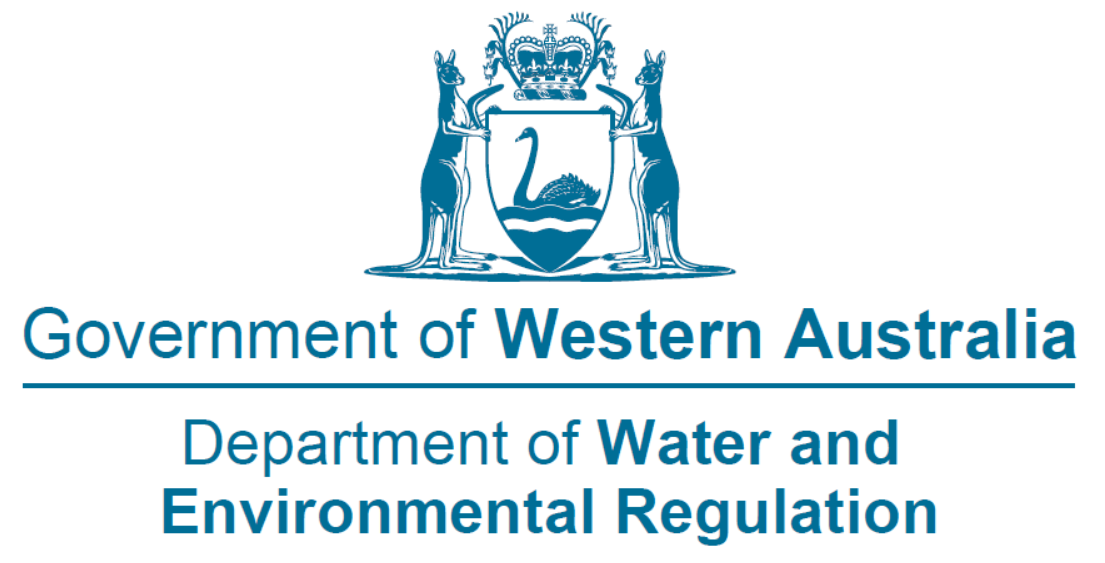Southwest Noongars and the Menang people of Albany
Research and ethnohistorical literature has established that Aboriginal settlement patterns flourished throughout the City of Albany. Whilst most areas were accessible and utilised for hunting, gathering and maintenance purposes some locations were preferable as longer duration or frequently revisited camp sites. Area such as woodland, coastline, rivers, estuarines and lakes were preferred locations while other areas such as forests were used intermittingly in season but nevertheless throughout the year.
Access to all regional areas was achieved along established tracks along riverbanks, across river fords, ridges and hill passes. Movement was undertaken from water source to water source constantly to camps of short duration leaving an archaeological imprint of sparse but scattered campsites. At the intersection of trackways or where a focal resource was present, was a prime camp site.
The jarri marri forest expanded and contracted over millenium camp sites were similarly posited; therefore camp sites may be present in presently forrested areas, woodland and/or farmland when conditions over time improved and permitted. Present sites recorded along the coast and immediate hinterlands are indicative of a time period of recent to several thousands years ago after sea level reached its present height. Currently there are over 40 aboriginal heritage listed/significant sites including Including a set of Fish traps built near the mouth of the Kalgan River in Oyster Harbour approximately 7000 years ago and remain sacred to the Menang people.
Research and ethnohistorical literature has established that Aboriginal settlement patterns flourished throughout the City of Albany. Whilst most areas were accessible and utilised for hunting, gathering and maintenance purposes some locations were preferable as longer duration or frequently revisited camp sites. Area such as woodland, coastline, rivers, estuarines and lakes were preferred locations while other areas such as forests were used intermittingly in season but nevertheless throughout the year.
Access to all regional areas was achieved along established tracks along riverbanks, across river fords, ridges and hill passes. Movement was undertaken from water source to water source constantly to camps of short duration leaving an archaeological imprint of sparse but scattered campsites. At the intersection of trackways or where a focal resource was present, was a prime camp site.
The jarri marri forest expanded and contracted over millenium camp sites were similarly posited; therefore camp sites may be present in presently forrested areas, woodland and/or farmland when conditions over time improved and permitted. Present sites recorded along the coast and immediate hinterlands are indicative of a time period of recent to several thousands years ago after sea level reached its present height. Currently there are over 40 aboriginal heritage listed/significant sites including Including a set of Fish traps built near the mouth of the Kalgan River in Oyster Harbour approximately 7000 years ago and remain sacred to the Menang people.
FISH TRAPS IN THE SOUTH-WEST OF WESTERN AUSTRALIA W.C. DIX* and SARA J. MEAGHERt [Received 8 August 1975. Accepted 12 November 1975. Published 30 September 1976.]
Early European Exploration
The first recorded European sighting of the King George sound was in 1627. The following year the first map the south coast was produced which shows a bay and islands that is possibly King George sound. It was another 164 years before Commander George Vancouver on board Discovery sailed into the sound and named it for King George III.
In 1826 Major Edmund Lockyer arrived abroad the Brig Amity to establish the first settlement in Western Australia. On the 27th of January 1827 a ceremony was held celebrating the founding of the settlement. In 1832 the Governor of the Swan River Colony, Sir James Stirling visited the settlement. With the possibility of moving the Western Australian Capital to King George Sound he renamed the town Albany after the Duke of York and Albany.
Albany became an important port for ships travelling from Europe to the Eastern States and for people travelling to the West Australian gold rush. By 1898 500 passengers a week were disembarking in Albany form the Eastern States. Due to the King George Sounds strategic importance and the threat of War between Russian and Britain in the mid 1880s an agreement was reached in 1889-1890 to build a defensive position in Albany. The position was completed by 1892. Due to the poor opportunities for farming and lack of minerals for mining the whaling industry was born. which continued in Albany until 1978.
The first recorded European sighting of the King George sound was in 1627. The following year the first map the south coast was produced which shows a bay and islands that is possibly King George sound. It was another 164 years before Commander George Vancouver on board Discovery sailed into the sound and named it for King George III.
In 1826 Major Edmund Lockyer arrived abroad the Brig Amity to establish the first settlement in Western Australia. On the 27th of January 1827 a ceremony was held celebrating the founding of the settlement. In 1832 the Governor of the Swan River Colony, Sir James Stirling visited the settlement. With the possibility of moving the Western Australian Capital to King George Sound he renamed the town Albany after the Duke of York and Albany.
Albany became an important port for ships travelling from Europe to the Eastern States and for people travelling to the West Australian gold rush. By 1898 500 passengers a week were disembarking in Albany form the Eastern States. Due to the King George Sounds strategic importance and the threat of War between Russian and Britain in the mid 1880s an agreement was reached in 1889-1890 to build a defensive position in Albany. The position was completed by 1892. Due to the poor opportunities for farming and lack of minerals for mining the whaling industry was born. which continued in Albany until 1978.
Land-use Change
The picturesque Oyster Harbour is highly valued for its role in history, tourism, biodiversity and production (commercial and recreational fishing and oyster and mussel farming).
Unfortunately due to extensive clearing and eutrophication within the catchment the harbour's ecosystem collapsed in the 1990s with significant loss to the seagrass and fish population. It has been recovering since, but there is need to boost the active management of waterways and increase actions to improve water quality in the region.
Unfortunately due to extensive clearing and eutrophication within the catchment the harbour's ecosystem collapsed in the 1990s with significant loss to the seagrass and fish population. It has been recovering since, but there is need to boost the active management of waterways and increase actions to improve water quality in the region.
The Oyster Harbour area is in the south of the Southern Agricultural Region. Land use varies with the northern end of the catchment dominated by cropping (wheat, canola and barley) and sheep production. The central region consists mainly of sheep and cattle production with some viticulture and agro-forestry. The lower part of the catchment includes cattle and sheep production, intensive horticulture and agro-forestry plantations.
The northern third is dominated by mixed cropping and sheep production with some enterprises cropping up to 80 per cent of the farm. Canola, wheat and barley are common with some summer crops. Sheep production for fat lambs is growing in popularity with wool-producing Merinos still common. The central portions of the catchment are very varied with mainly sheep for wool and meat with smaller areas of cattle production dominant. In the central and northern portions however there are large areas of tertiary sediments overlaying granitic bedrock. There is also a significant area of blue gums in the area receiving more than 600 mm rainfall and some areas of viticulture around the Porongurup Ranges. In the south below the Porongurup Ranges the rainfall rapidly increases. Cattle and sheep farming is dominant with large areas of blue gums. Some areas of intensive horticulture can be found with strawberries, cherries, avocadoes and vegetables grown for both local and export markets. Closer to Albany there is an increasing urban and peri-urban population.
The northern third is dominated by mixed cropping and sheep production with some enterprises cropping up to 80 per cent of the farm. Canola, wheat and barley are common with some summer crops. Sheep production for fat lambs is growing in popularity with wool-producing Merinos still common. The central portions of the catchment are very varied with mainly sheep for wool and meat with smaller areas of cattle production dominant. In the central and northern portions however there are large areas of tertiary sediments overlaying granitic bedrock. There is also a significant area of blue gums in the area receiving more than 600 mm rainfall and some areas of viticulture around the Porongurup Ranges. In the south below the Porongurup Ranges the rainfall rapidly increases. Cattle and sheep farming is dominant with large areas of blue gums. Some areas of intensive horticulture can be found with strawberries, cherries, avocadoes and vegetables grown for both local and export markets. Closer to Albany there is an increasing urban and peri-urban population.
If our local history interest you please visit:
Albany's
Albany's
- Oyster Harbour Fish Traps
- National Anzac Centre
- Museum of the Great Southern
- Strawberry Hill farm
- Albany Convict Gaol & Museum
- Old Police Station and Museum
- St Werburghs Capel
- Waddy's Hut
- Castle Rock Walitj Meil Walk Trail
For further reading on the broader South Coast, please see:
- Gondwana-link
- Various documents produced by Steve Janicke (see: http://janicke.com.au/about-us-2/).
- South Coast Snapshot, published by SCNRM in 2017. Available at: http://southcoastnrm.com.au/images/user-images/documents/publications/Snapshot_-_full.pdf
We acknowledge the Minang and Koreng people as the traditional custodians of the land on which we work and live. We pay our respects to the Elders, past, present, and emerging and to the wider Noongar community.
Sponsors and Supporters











